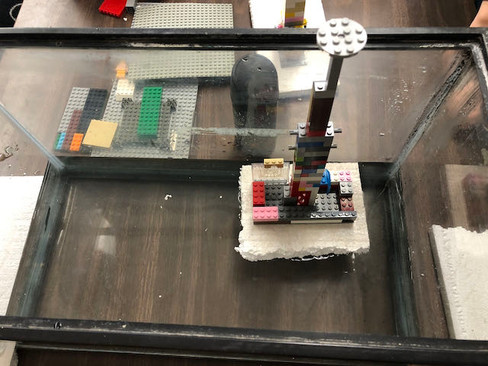Ashford School Arctic Exploration
- arcticfloatboat
- Dec 6, 2023
- 2 min read
written by the fourth graders
In science class at Ashford School in Connecticut the third and fourth graders learned about the Arctic to prepare for Float Your Boat. The goal was to decorate a boat that floats on ice in the Arctic and then see where it ends up.
To learn about the Arctic, first we learned about Arctic animals. We participated in the Lego Build the Change Challenge where we designed solutions to help Polar Bears that are being impacted due to climate change and less sea ice. We also did a lesson on Mystery Science where we learned about Arctic Animal Adaptations and we made Arctic food chains during a JASON Learning lesson.
We also did a sea ice melt simulation. We made clay hills going to a pool of water. We put ice cubes on top of the clay hills. As the ice melted, the water went up and there was less land. We also put ice in a beaker of water but as that ice melted the water did not rise. Climate change is causing ice melt which can lead to rising sea levels that impact Arctic animals and habitats.
Another activity we did was to make polar ice drifters. We built the tracking drifters out of Legos. We built them on sheets of styrofoam which simulated sheets of ice. The polar ice drifters had to balance on the “sheets of ice” floating in the tank of water which we gently shook to simulate moving currents.
We also mapped the ocean currents in the Arctic. We used a map and had to follow the arrows to see where the currents were going. We also looked at other maps of the Arctic.
We even Zoomed with National Park Rangers in Denali to learn about the Arctic tundra. It was fun talking to them over Zoom because they were able to answer our questions and show us around Denali National Park.
Finally, after learning all about the Arctic, we colored our boats, packed them in a box, and shipped them off. And now we just have to wait to see where they end up. We’re so excited. Thank you Float Your Boat!
These fourth graders are taught by teacher Carly Levine.























Comments